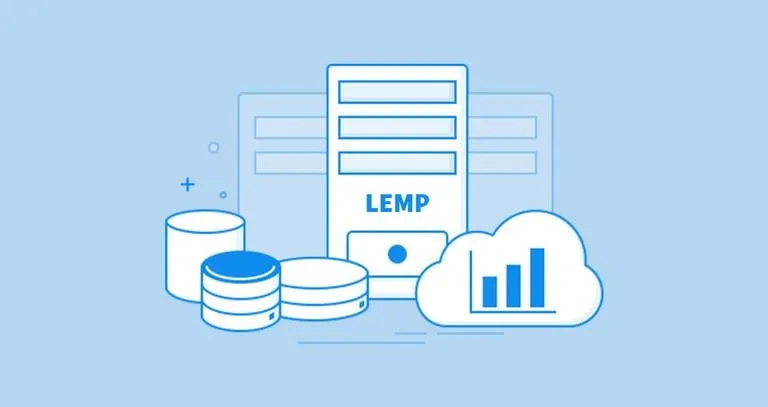Install LEMP on CentOS 7

The term LEMP is an acronym of the names of its four open-source components:
- L - Linux operating system
- E - Nginx [engine x] a HTTP and reverse proxy server
- M - MySQL or MariaDB relational database management system
- P - PHP programming language.
This series of tutorials will show you how to install Nginx, generate a free Let’s Encrypt SSL certificate, install and secure MySQL and install PHP 7.
The detailed tutorials that are part of this series are listed at the end of this page.
If you are in a hurry and don’t want to read more detailed documentation you can install LEMP Stack on your CentOS 7 server by following our Quickstart section.
Install LEMP Stack on CentOS 7 [Quickstart]
This quickstart will show you the basic steps required to get a LEMP stack installed on a CentOS 7 server.
Prerequisites
The user you are logged in as must have sudo privileges to be able to install packages.
Step 1. Installing Nginx
Nginx is not available in the default CentOS 7 repository so we will use the EPEL repositories. To add the EPEL repository to your system, use the following command:
sudo yum install epel-release
Now that the EPEL repository is enabled, install the Nginx package with:
sudo yum install nginx
Once it is installed, start and enable the Nginx service by typing:
sudo systemctl start nginxsudo systemctl enable nginx
Step 2. Installing MariaDB
The next step is to install the MariaDB packages. To do so type:
sudo yum install mariadb-server
Once MariaDB server is installed, start and enable the service with:
sudo systemctl start mariadb.servicesudo systemctl enable mariadb.service
Step 3. Installing PHP
CentOS 7 ships with PHP version 5.4 which is EOL-ed for quite some time so we’ll use the Remi repository to install PHP 7.2.
Run the following command to add the Remi repository to your system:
sudo yum install http://rpms.remirepo.net/enterprise/remi-release-7.rpm
Once it is added, install the yum-utils package and enable the remi-php72 repository:
sudo yum install yum-utilssudo yum-config-manager --enable remi-php72
Now that we have Remi repository enabled, we can install PHP FPM and several most common PHP modules with:
sudo yum install php-fpm php-opcache php-cli php-gd php-curl php-mysql
By default PHP FPM will run as user apache on port 9000. We’ll change the user to nginx and switch from TCP socket to Unix socket. To do so edit the lines highlighted in yellow:
sudo nano /etc/php-fpm.d/www.conf
... user = nginx ... group = nginx ... listen = /run/php-fpm/www.sock ... listen.owner = nginx listen.group = nginx
Make sure the /var/lib/php directory has the correct permissions:
chown -R root:nginx /var/lib/php
Save the file, enable and start the PHP FPM service with:
sudo systemctl enable php-fpmsudo systemctl start php-fpm
Step 4. Configuring Nginx to Process PHP Pages
Now that we have all of the LEMP components installed, we can edit the Nginx server block configuration file and add the following lines so Nginx can process PHP files:
server {
# other code
location ~ \.php$ {
try_files $uri =404;
fastcgi_pass unix:/run/php-fpm/www.sock;
fastcgi_index index.php;
fastcgi_param SCRIPT_FILENAME $document_root$fastcgi_script_name;
include fastcgi_params;
}
}
Do not forget to restart the Nginx service for the changes to take effect:
sudo systemctl restart nginx
Conclusion
In this guide, you’ve built a flexible foundation for serving PHP websites and applications to your visitors, using Nginx as web server and the latest PHP release version. You’ve set up Nginx to handle PHP requests through php-fpm, and you also set up a MariaDB database to store your website’s data.

